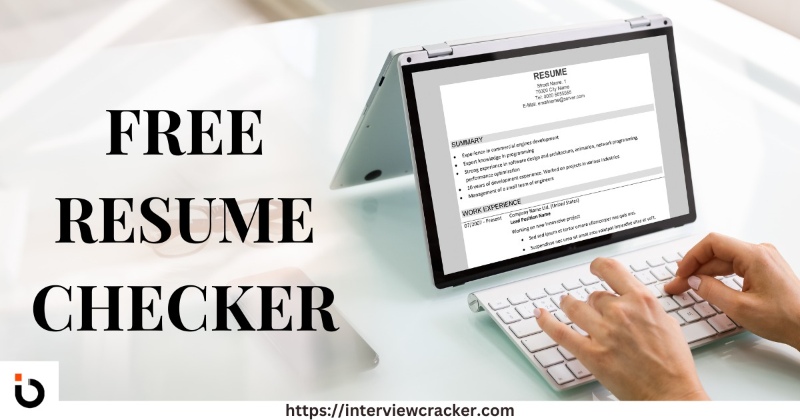Leaving a job can be emotional — whether it’s excitement for a new opportunity or sadness about moving on from a great team. Whatever the circumstances, sending a thoughtful farewell email helps you leave on a positive note, maintain professional relationships, and show gratitude.
In this guide, you’ll learn how to write a farewell email, tips for making it memorable, and get access to expert-approved farewell email samples and templates.
Table of Contents
ToggleWhy Is a Farewell Email Important?
A farewell email isn’t just a polite gesture; it’s a key part of your career journey. Here’s why it matters:
Preserves Professional Relationships: You never know when paths may cross again.
Leaves a Positive Impression: Gratitude and professionalism speak volumes.
Offers Closure: It provides a formal way to say goodbye and express appreciation.
Opens Networking Opportunities: It invites colleagues to stay connected beyond the workplace.

How to Write an Effective Farewell Email
Writing a farewell email is simple if you follow this structure:
Subject Line: Keep it clear and positive.
Greeting: Personalize it — use the team’s name or individuals if possible.
Opening: Announce your departure briefly.
Body:
Express gratitude for your experience.
Mention positive memories or lessons learned.
Offer contact information to stay connected.
Closing: End with best wishes and a friendly goodbye.
Farewell Email Sample Templates
Here are expert-level samples you can customize based on your situation.
1. Farewell Email to the Team (General)
Subject: Thank You and Farewell
Hi Team,
As some of you may know, today is my last day at [Company Name]. It’s been an incredible journey filled with learning, growth, and fantastic memories.
I’m truly grateful for the support, collaboration, and friendships I’ve built here. Working alongside such talented and passionate individuals has been a highlight of my career.
Though I’m excited for my next chapter at [Next Company/Opportunity], I will genuinely miss being part of this amazing team. Please feel free to stay in touch — you can reach me at [Personal Email] or connect with me on LinkedIn [LinkedIn Profile Link].
Wishing you all continued success and happiness!
Warm regards,
[Your Full Name]
2. Farewell Email to Close Colleagues (More Personal)
Subject: Goodbye for Now, Friends!
Hey [Team/Names],
I can’t believe it’s time to say goodbye! Working with all of you has made my time at [Company Name] so special. From [inside jokes/major projects/memorable moments], it’s been an unforgettable ride.
Thank you for the endless support, laughter, and inspiration. I’m moving on to a new adventure but will carry these memories with me forever.
Let’s not lose touch — you can find me at [Personal Email] or on LinkedIn [Profile Link]. Hope to see you around soon (maybe even at a coffee shop nearby)!
Cheers,
[Your Name]
3. Farewell Email to Manager
Subject: Thank You for Everything
Dear [Manager’s Name],
I wanted to personally thank you before I move on from [Company Name]. Working under your leadership has been one of the most rewarding experiences of my career.
Your mentorship, encouragement, and trust have made a lasting impact on me both professionally and personally. I truly appreciate all the guidance and opportunities you’ve provided.
Though I’m excited for the next phase, I will always be grateful for the time spent on your team. Please stay in touch — my personal email is [Personal Email], and I’m also on LinkedIn [Profile Link].
Wishing you and the team continued success!
Best regards,
[Your Name]
4. Short and Simple Farewell Email
Hi Everyone,
Today marks my last day at [Company Name]. I just wanted to say thank you for the wonderful experiences, teamwork, and memories.
I’m excited for what’s ahead but will always value my time here. Feel free to connect with me at [Personal Email] or on LinkedIn [Profile Link].
Wishing you all the very best!
Cheers,
[Your Name]
5. Farewell Email for Remote Teams
Subject: Signing Off and Staying Connected
Hi Team,
As my journey with [Company Name] comes to an end, I just wanted to express my heartfelt thanks to all of you. Despite the miles between us, your support and camaraderie have made me feel connected every day.
I’m proud of what we’ve achieved together, and I’ll cherish the moments we shared virtually. Let’s keep in touch — [Personal Email] or [LinkedIn Profile Link].
Wishing everyone amazing success ahead!
Sincerely,
[Your Name]

Tips for a Memorable Farewell Email
Writing a goodbye email is more than just announcing your departure — it’s your final opportunity to leave a positive, lasting impression. A well-crafted farewell email reflects your professionalism, gratitude, and interpersonal skills, all of which can significantly impact how you’re remembered.
Here are key tips to help you write an outstanding goodbye email:
1. Be Timely
Send your goodbye email on your last working day or one day prior.
Sending it too early might feel premature and disrupt your workflow.
Sending it too late could mean missing people who are out of the office or unavailable.
Pro Tip: If you’re part of multiple teams or departments, segment your emails to tailor the timing appropriately.
2. Keep It Professional and Positive
Even if your experience was challenging or complicated, always maintain a professional and positive tone.
Focus on gratitude, the skills you gained, relationships you built, and memories you cherish.
Avoid venting frustrations or airing grievances — negativity travels faster than positivity and can tarnish your reputation.
Remember, people tend to remember how you made them feel — end things on a high note.
3. Personalize When Appropriate
Generic farewell emails feel cold and disconnected. Personalize your message if possible:
Mention specific colleagues who made a difference.
Recall special team moments, milestones, or successful projects.
A simple personalized line makes your goodbye memorable.
Example:
“I’ll always remember how we pulled together to launch [Project Name] under tight deadlines — what a team!”
4. Express Genuine Gratitude
A farewell email is primarily a thank you note at heart.
Thank your managers, teammates, and even supporting teams (HR, admin, IT) who made your journey smoother.
Highlight specific contributions or support you received, when appropriate.
Gratitude leaves a lasting impact, and it builds goodwill you might need later in your career.
5. Share Your Contact Information
Always provide a way for people to stay in touch.
You can include:
Your personal email address.
Your LinkedIn profile link.
Optionally, your phone number (if you’re comfortable).
Sample Line:
“Feel free to reach out anytime at [your email] or connect with me on LinkedIn [link]. I’d love to stay in touch!”
Networking doesn’t end with your resignation — it often starts there.
6. Be Clear and Concise
Respect your colleagues’ time:
State clearly that you are leaving.
Mention briefly where you’re headed (optional).
Stay concise — a farewell email shouldn’t be longer than a few paragraphs unless it’s highly personalized for a small team.
Long, winding emails risk losing the reader’s attention.
7. Stay Away from Sensitive Information
Your farewell email isn’t the place to:
Discuss the reasons for your resignation in detail.
Talk about internal company matters.
Share confidential or strategic information.
Compare your new job to your old one.
Keep it professional, diplomatic, and focused on appreciation rather than explanation.
8. Use a Friendly Yet Professional Subject Line
Your subject line should set the right tone — warm and professional, not overly emotional.
Examples include:
Thank You and Farewell
Moving On to New Adventures – Staying Connected!
Wishing You All the Best – A Goodbye Note
A good subject line ensures your email gets opened and read.
9. Proofread Before Sending
The last thing you want is a typo or grammatical error in your final email.
Double-check names, dates, and links.
Read it aloud to catch awkward phrasing.
If possible, review it after a short break for a fresh perspective.
A polished farewell email shows attention to detail and respect for your audience.
10. Consider Who Should Receive It
Think about your audience:
Individual email for your manager, mentor, or close colleagues.
Group email for your broader team or department.
Company-wide email only if approved by HR or leadership.
Be mindful not to spam irrelevant teams with unnecessary messages.
When Should You Send a Farewell Email?
Ideally, you should send your farewell email on your last working day or one day before. Sending it too early might disrupt workflow; sending it too late might miss some colleagues.
Tip: Always inform your direct manager first before informing your wider team.

Mistakes to Avoid in Farewell Emails
✅ Don’t be overly emotional (especially in professional settings).
✅ Avoid criticizing the company, team, or leadership.
✅ Don’t overshare personal reasons for leaving.
✅ Never disclose confidential information.
✅ Don’t forget to double-check spelling and grammar!
Final Thoughts
Writing a great farewell email is your chance to show appreciation, maintain strong professional bonds, and leave a positive lasting impression. Whether you’re moving across the country, shifting industries, or simply chasing a new dream, a well-crafted goodbye note reflects your professionalism and emotional intelligence.
Use these templates as your starting point and personalize them to reflect your voice and experience.
Remember:
“People may forget what you said, but they will never forget how you made them feel.” — Maya Angelou
So, make your farewell email warm, genuine, and memorable.







